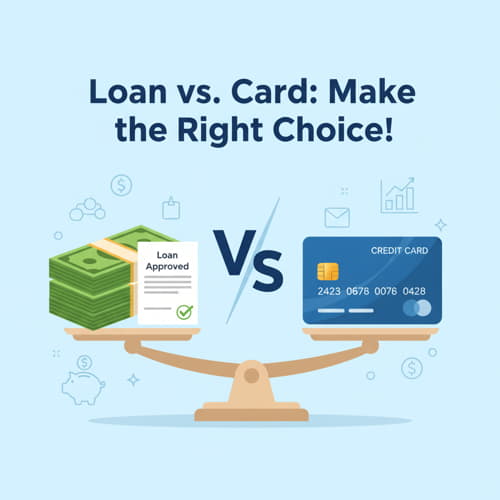Secured Personal Loans vs. Secured Credit Cards 2026
Secured Personal Loans vs. Secured Credit Cards 2026
Secured Personal Loans vs. Secured Credit Cards 2026: Which is Better for Bad Credit?
Introduction: The Great Confusion in Credit Building
If you have bad credit (a FICO score below 670), your primary financial goal for 2026 should be simple: prove you are responsible. Lenders are hesitant, so they require collateral—something valuable you put up as security—to give you access to credit. This is where secured products come in.
The confusion starts when you have to choose between a Secured Personal Loan and a Secured Credit Card. Both require a deposit, and both build credit, but they are used for completely different financial goals. One gives you a lump sum; the other gives you revolving credit.
This expert comparison guide will break down the crucial differences for US borrowers in 2026, helping you choose the precise tool you need to repair your financial reputation quickly.
## Secured Personal Loan: The Lump Sum Solution
A Secured Personal Loan is ideal when you need a specific, fixed amount of money right now.
### How It Works
You provide an asset (like a Certificate of Deposit, or sometimes a car title or savings account balance) as collateral. The lender gives you a lump sum of cash upfront. You then pay this loan back in fixed monthly installments over a set period (e.g., 2 to 5 years).
### Pros: When to Choose a Secured Loan
- Fixed Payoff Date: You know exactly when the debt will be gone. This discipline is great for managing your credit history.
- Lower Interest Rates: Because the loan is secured, the lender takes less risk. This often translates to a lower APR compared to an unsecured or secured credit card.
- Lump Sum Access: It provides immediate cash for a large, one-time need (e.g., medical emergency, necessary home repair).
### Cons: The Risks
- Risk of Loss: If you default on payments, you risk losing the asset you put up as collateral.
- Not for Daily Use: Once the money is spent, you don’t get the credit back until the loan is paid off.
## Secured Credit Card: The Revolving Credit Builder
A Secured Credit Card is the most common and often the best tool for borrowers specifically aiming to improve their credit score.
### How It Works
You provide a cash deposit (e.g., $200-$500) to the bank, which becomes your credit limit. You use the card for small, everyday purchases. The deposit is held as collateral and is typically refundable when you close the card or graduate to an unsecured card.
### Pros: When to Choose a Secured Card
- Directly Impacts Utilization: This is the key. Secured cards allow you to practice maintaining a low Credit Utilization Ratio (the amount you owe vs. your limit). Keeping this ratio below 30% is crucial for score growth.
- No Fixed End Date: You can use it indefinitely, allowing you to establish a long, positive credit history.
- Potential for Upgrade: Many issuers will automatically review your account and transition you to an unsecured card after 6-12 months of responsible use, returning your deposit.
### Cons: The Drawbacks
- Lump Sum Not Available: You cannot access a large amount of cash immediately; the limit is usually small.
- Higher APR: The interest rate is generally higher than that of a secured loan (though you should pay your bill in full to avoid interest anyway).
## 2026 Comparison: Which Tool Best Suits Your Goal?
To decide, ask yourself: “What is my immediate financial need?”


